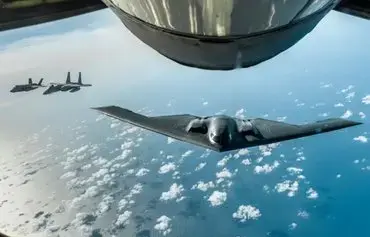Society
Arctic power play: NATO's modern edge against aging rivals
As the Arctic becomes a focal point of global competition, NATO's technological advancements and operational readiness provide a critical edge.

By Kontur |
If you wanted to talk to a submarine hiding under Arctic ice, you couldn't just pick up the phone. You'd need a signal powerful enough to pass through seawater, ice and hundreds of miles of empty air -- and you'd need to send it without giving away the submarine's position. NATO has a way to do exactly that, and it's one of the lesser-known capabilities keeping its forces connected in a crisis.
Silent signals
That ability comes from a mission known as Take Charge and Move Out, or TACAMO. It gives the US president, the secretary of defense and Strategic Command a secure way to communicate with naval ballistic missile forces, even if ground-based systems are compromised.
For more than three decades, TACAMO has relied on a specialized aircraft, the E-6B Mercury, equipped with trailing antennas and advanced communications systems that make it part airborne command post, part communications relay. Soon, that workhorse will give way to the E-130J Phoenix II, a modernized platform designed to carry the mission into a new era.
TACAMO aircraft are built for a very specific purpose: to ensure secure communication with submerged submarines using very low frequency radio transmissions. This allows them to transmit signals across vast distances, cutting through ocean depths to reach hidden vessels and enabling NATO to maintain a robust command-and-control network that spans the Arctic, Atlantic and Pacific Oceans. It's a quiet but essential part of the alliance's ability to defend its northern flank and project power across two oceans.
![A photo taken from footage released by the Russian Defense Ministry Press Service on March 26, 2021, shows a Russian nuclear submarine breaking through the Arctic ice during military drills at an unspecified location. [Russian Defense Ministry]](/gc6/images/2025/08/21/51538-sub-370_237.webp)
Allies in motion
This communications mission is only one part of NATO's broader posture. The same blend of specialized platforms, advanced technology and rigorous training underpins the alliance's ability to deter threats and respond in real time -- whether under the sea or in the skies. That readiness is tested regularly, as in the biannual Global Guardian exercise.
In March 2025, fighter jets from five Joint Expeditionary Force nations -- the Netherlands, Denmark, Sweden, Norway and Finland -- scrambled to intercept simulated hostile patrols. Overhead, two US Air Force B-52 Stratofortress bombers flew a routine mission between the United Kingdom and the United States, escorted and tracked by allied forces along the way.
On the ground, air defense networks in the United Kingdom and Iceland monitored the bombers' flight path. NATO's Combined Air Operations Centre in Germany coordinated the response, ensuring every move fit seamlessly into the bigger picture. When the aircraft left European airspace, US and Canadian forces picked up the mission, demonstrating how the alliance can operate as a single, continuous defense system across the Atlantic.
A changing Arctic
While NATO continues to innovate, Russia and China face significant challenges in keeping pace.
China's Arctic ambitions, encompassing access to energy, shipping lanes and strategic influence, remain constrained by a lack of bases, under-ice capabilities and sustained presence.
Russia's Arctic forces look formidable on paper, but many of its ships, aircraft and submarines date back decades. Sanctions, supply shortages and years of underinvestment have slowed modernization and left parts of its fleet struggling to stay operational. Even its once-formidable nuclear deterrent has been weakened by maintenance challenges and the loss of high-value assets in recent conflicts.
NATO's integration of TACAMO shows how the alliance stays ahead: by combining advanced technology with highly coordinated operations. In an Arctic security environment shaped by melting ice, new shipping routes and intensifying competition, those qualities matter more than ever.
While Russia and China face limits on what they can sustain or project, NATO's focus on mobility, interoperability and technological superiority ensures it remains the dominant force in the Arctic -- and ready to respond far beyond it.